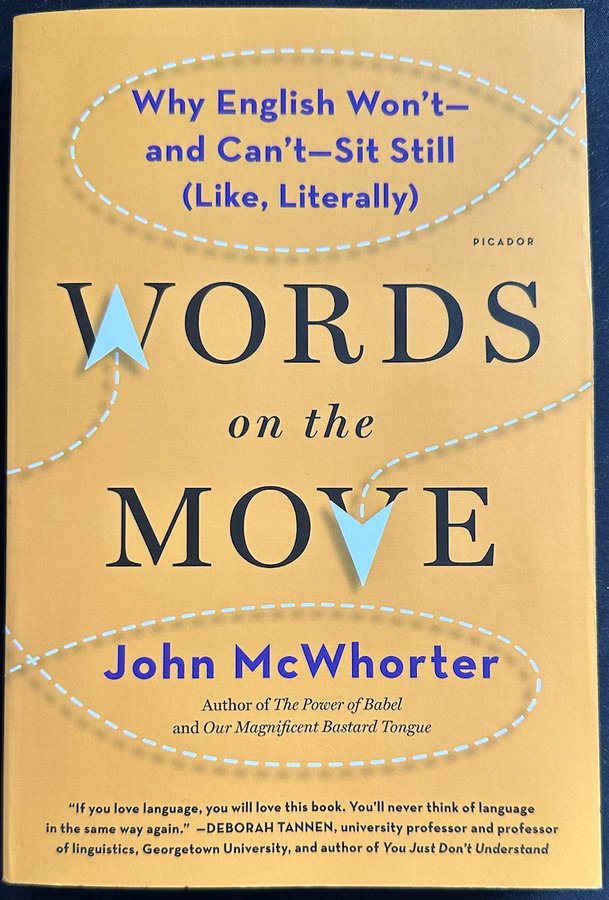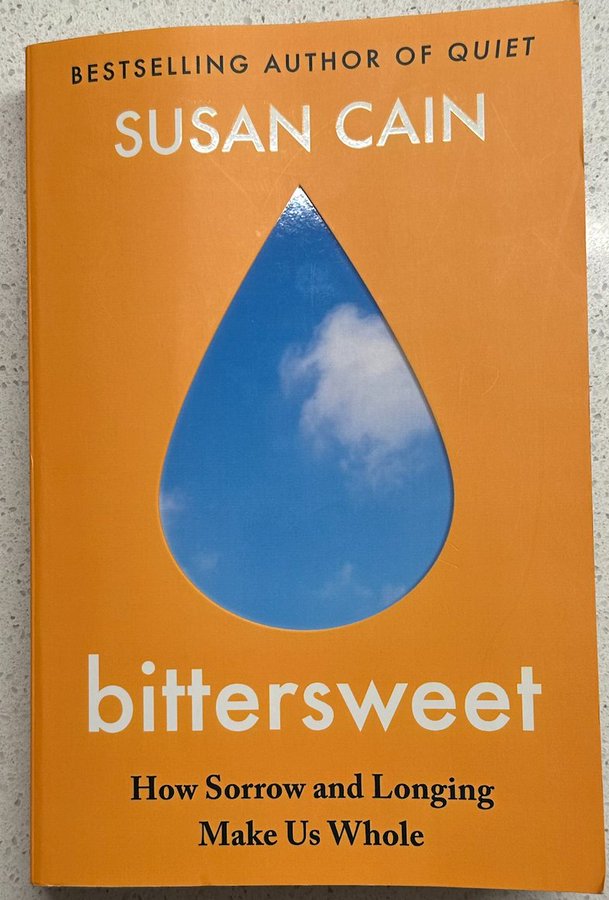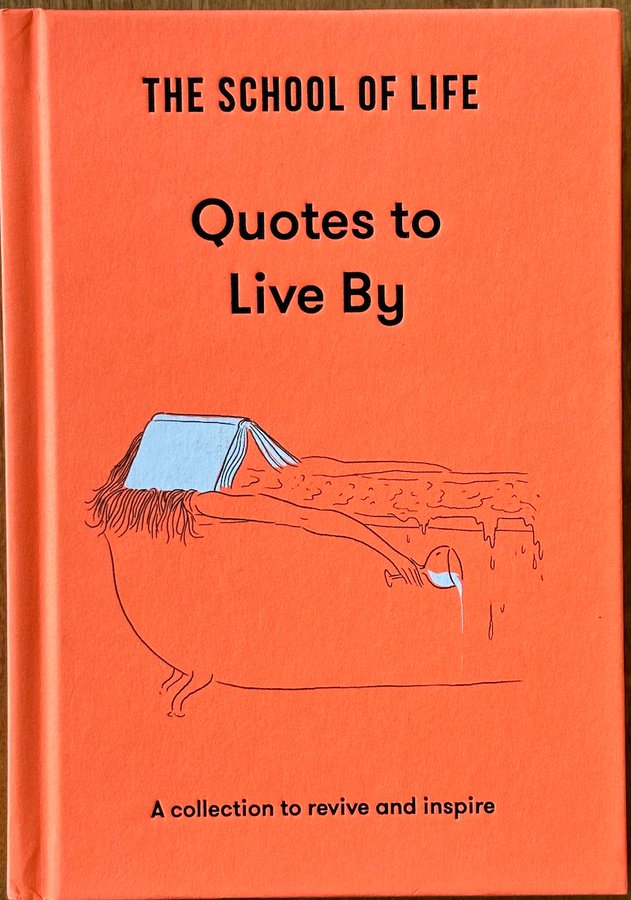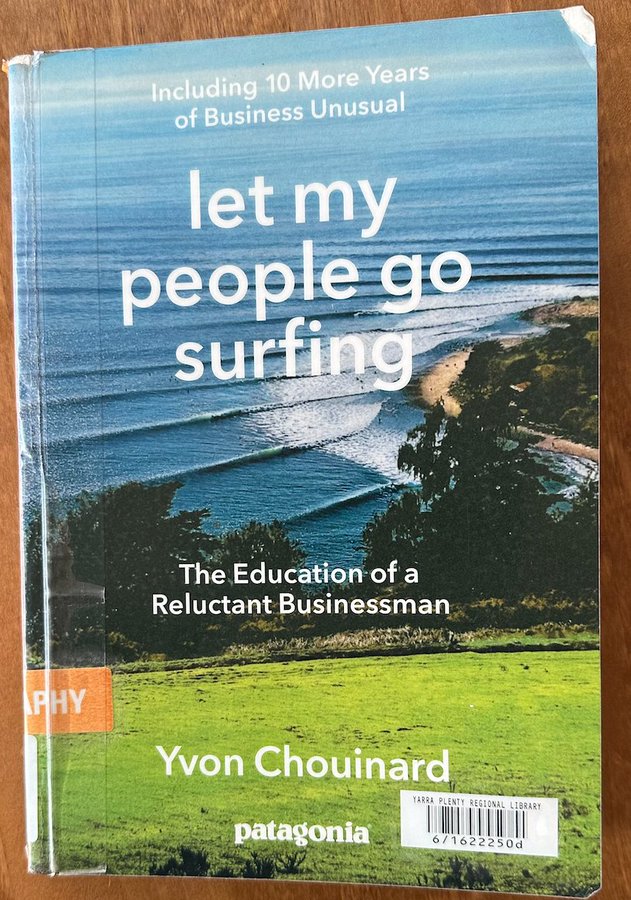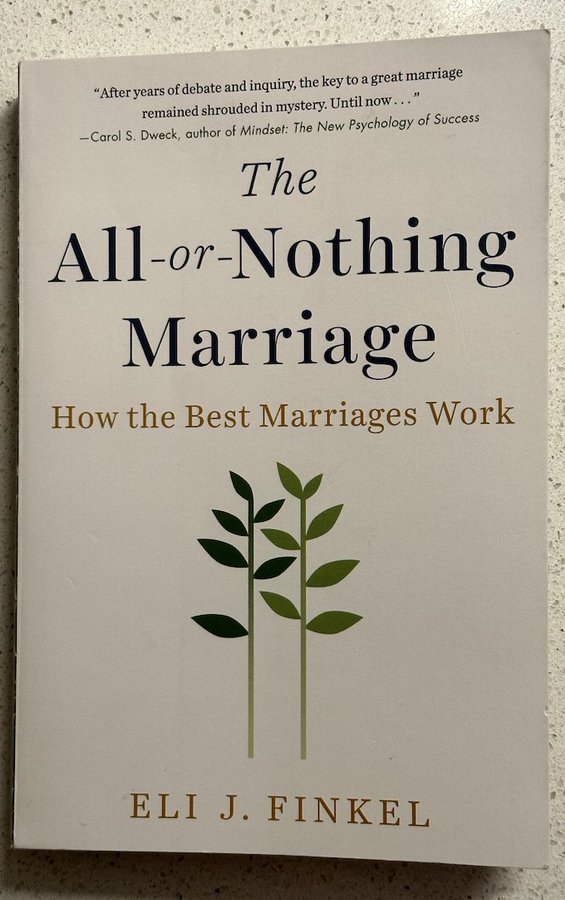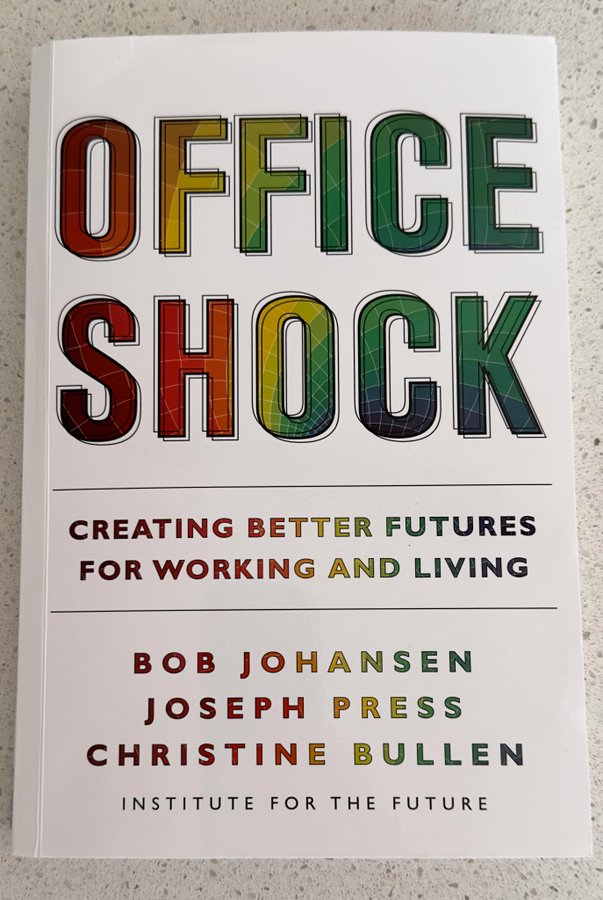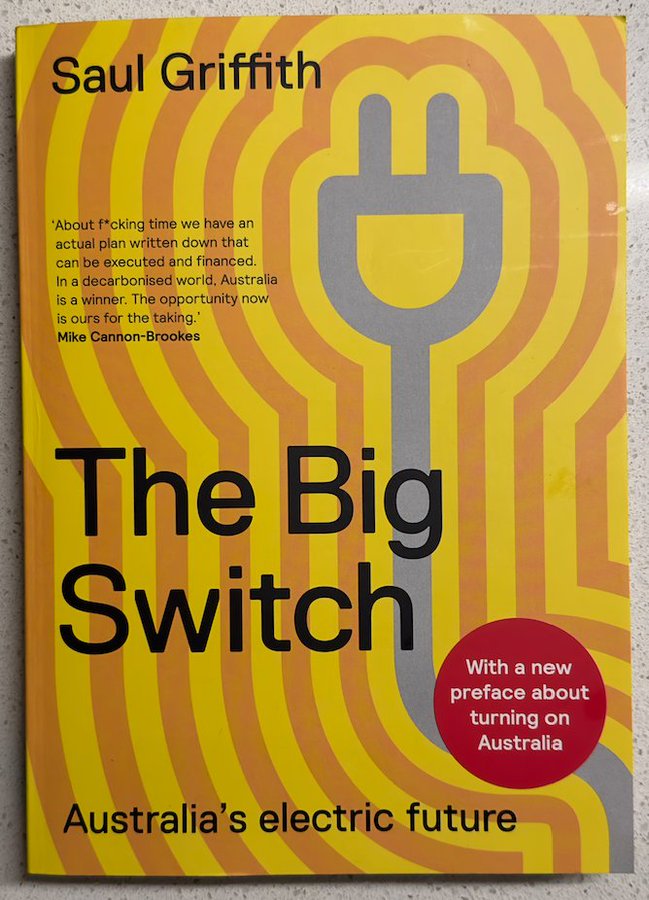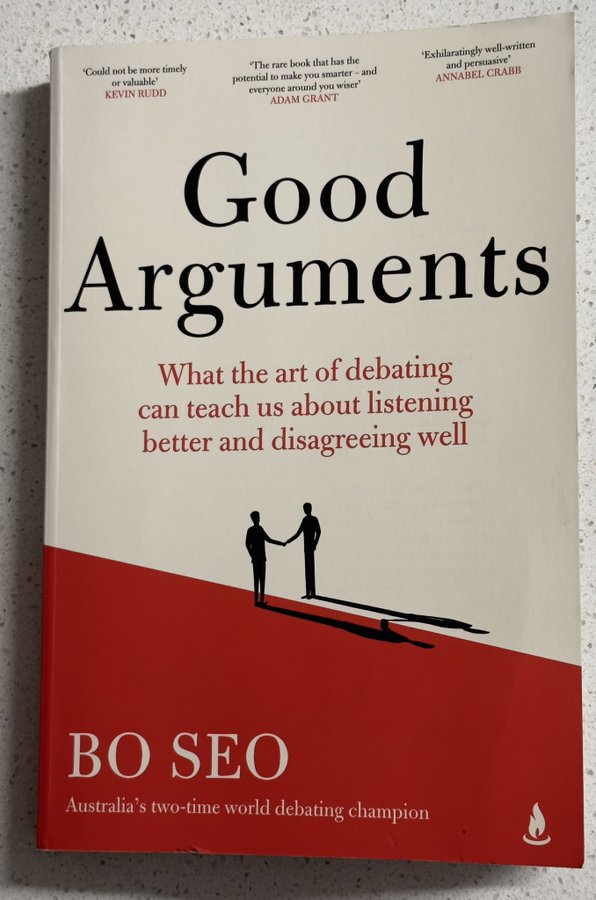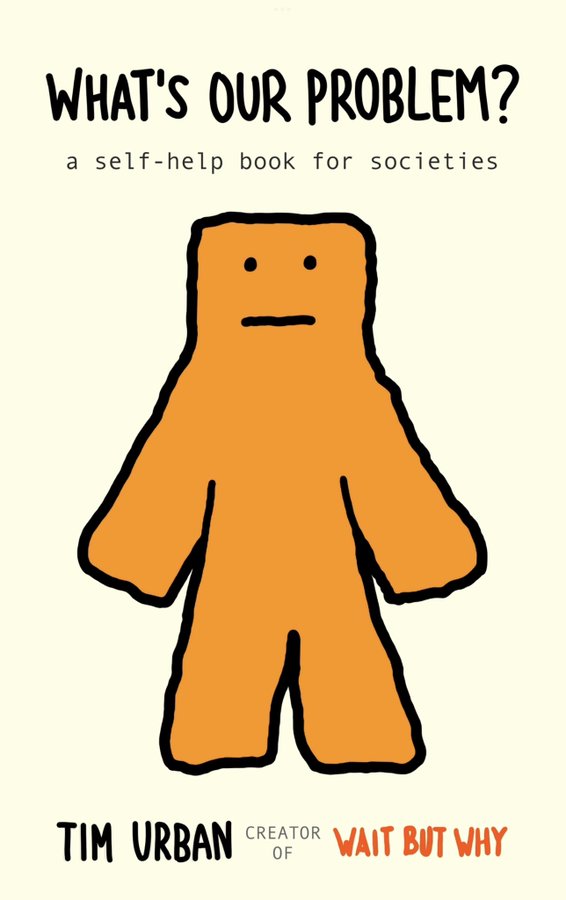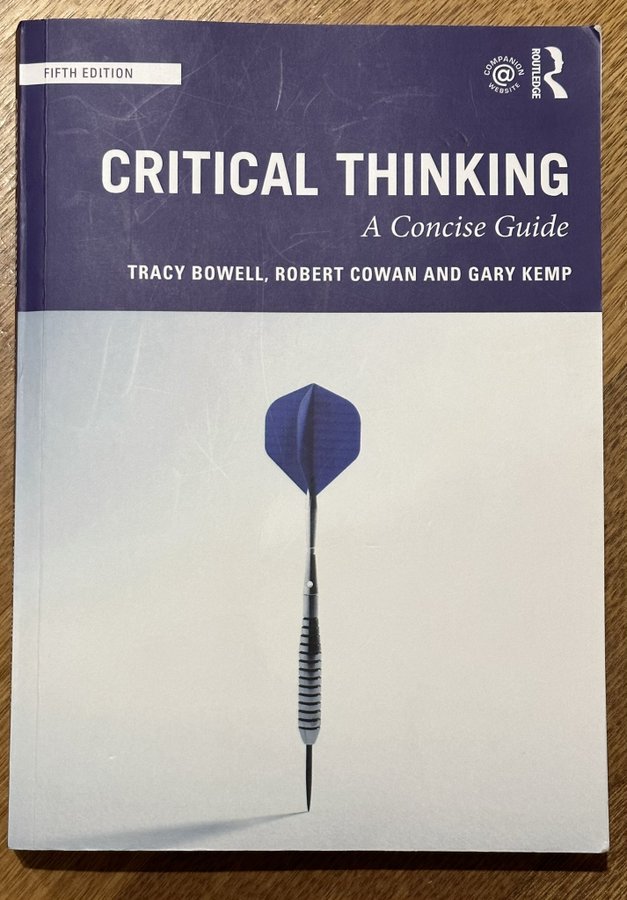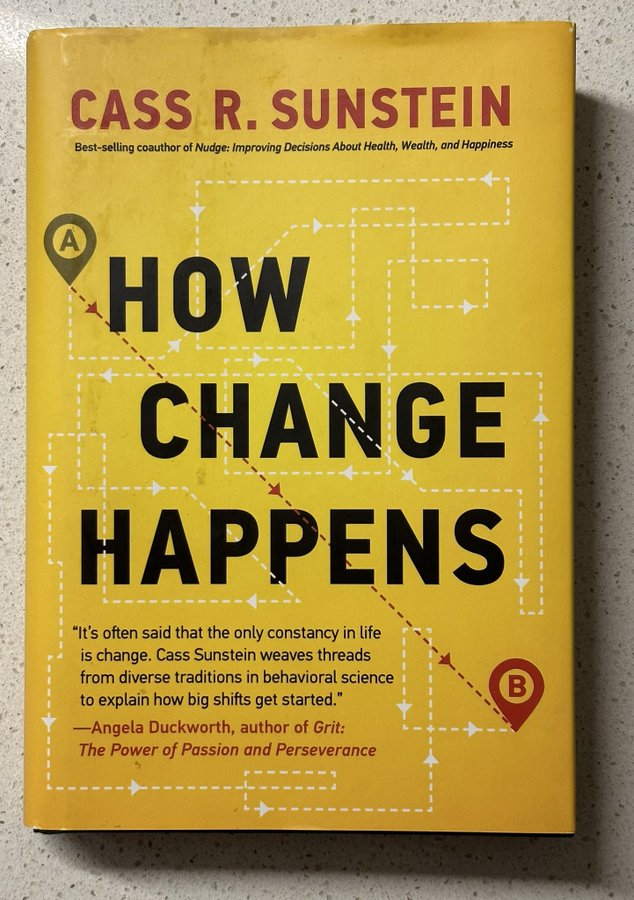New items will be added to the bottom as I get through them.
Last updated on December 11th, 2023
Words on the Move by John McWhorter
I like to learn more about language, so I was really looking forward to this one. It’s a nice concise look into the history of English and how it evolves, but I found it “only” interesting – i.e. not amazing. YMMV. https://amazon.com.au/Words-Move-English-Still-Literally/dp/1250143780/
Bittersweet by Susan Cain
A hauntingly beautiful, touching, and aptly bittersweet treatise of the concept of “bittersweet”. It would’ve benefited from a bit of a broader focus, but it’s a worthy read that makes you think about things not often thought. https://amazon.com.au/Bittersweet-Sorrow-Longing-Make-Whole/dp/0241300681/
Quotes to Live By by The School of Life
Condensed wisdom in bite-sized pieces; even the few points I didn’t agree with provided different perspectives are were thus valuable. Spoiler: there’s no way to live by _all_ of them. https://amazon.com.au/School-Life-Quotes-Live-enlighten/dp/191508704X/
Let My People Go Surfing by Yvon Chouinard
This is actually a re-read; I’d read the 1st edition a long time ago. The message of responsible business in all forms is even more important and urgent today; if you run/own a biz, this is your ethical guide. https://amazon.com.au/Let-People-Surfing-Education-Businessman-Including/dp/0143109677/
The All or Nothing Marriage by Eli J. Finkel
A fascinating look into the changing institution that is marriage, and what it can be at its best today. There are lessons for everyone in it, though the systems engineer in me is a little worried. https://amazon.com.au/All-Nothing-Marriage-Best-Marriages/dp/1101984341/
Office Shock by Bob Johansen, Joseph Press, and Christine Bullen
Your guide to the future of the office and beyond. A nice mix of good questions to prompt your own insights and some examples of courses of action one could take. https://amazon.com.au/Office-Shock-Creating-Futures-Working/dp/1523003677/
The Big Switch by Saul Griffith
There is no single model on how to restructure energy globally, and we might not be able to electrify everything globally. But we _can_ do it in Australia, easily-ish, and this book is the local how-to model for doing that. https://amazon.com.au/Big-Switch-Australias-Electric-Future/dp/1760643874/
Good Arguments by Bo Seo
Partly a thematically restricted autobiography, partly a book on debating. Contains some good material and practical guidance, though the way it’s presented feels like it applies more to formal debates than everyday life. https://amzn.asia/d/4f8WxCI
What’s Our Problem by Tim Urban
Puts into context and words what we’re all feeling is happening (everywhere but especially in the US). We need to put an end on this insanity of SJF and low-rung thinking in general. Excellent, funny, educational & scary. https://amazon.com.au/gp/product/B0BTJCTR58
Critical Thinking by Boswell, Cowan & Kemp
A wonderful, rather formal introduction to critical thinking. The rigor & accuracy covered here is sadly rarely seen in everyday life. Best part was coverage on pseudo-reasoning. It’s nice to have exercises, too. https://amzn.asia/d/4O0Ic7g
How Change Happens by Cass R. Sunstein
Is like the societal version of “How Minds Change“; a lot of coverage of things from nudges to coercion and preferences & ethics, it’s an insightful journey into how societal norms can change seemingly overnight. https://amzn.asia/d/2FtP6pS

This Could Be Our Future by Yancey Strickler
One of the questions that our current era of continually improving technological capabilities will soon force organisations and societies to grapple with is where efficiency ends as a value for us. We have arguably already overshot in the direction of financial optimisation in many domains, but we are going to be forced to examine where that ends in the near future; it would of course be better to do that before being forced to.
It is the root cause of the incessant drive to seek only financial efficiencies that is at the core of “This Could Be Our Future: A Manifesto for a More Generous World” by Yancey Strickler. You may know Strickler as the co-founder of Kickstarter, so it’s not like this manifesto is coming to you from the edges of some utopian hippieverse.
It lays out the uncomfortable truths and glaring omissions in our contemporary value systems. This Could Be Our Future is fundamentally a strong critique of our hyper-capitalistic society and its single-minded pursuit of financial gains. Strickler doesn’t just dwell on its quite obvious moral deficits; he digs into the psychological, sociological, and even ontological implications of our narrowed sense of value – and, quite importantly, offers some suggestions for ways out of the hole we’ve dug ourselves in.
One of the specific alternatives is the concept of ‘Bentoism,’ a philosophy that outlines how to broaden the variables in our value equation so that it both takes into account more than just ‘us’, but also temporally more towards the future. It’s a good, practical tool for your box of Tools for Thinking.
It should be noted that it’s not a utopian treatise in the sense that Strickler would be suggesting we overthrow the entire system; rather, he’s advocating for expanding our toolbox. It’s like switching from black-and-white photography to color — it’s not that black and white is bad, it’s just severely limiting in what it can capture. The challenge, then, is to decide what colors deserve to be in the picture, and that is where the book turns from a monologue into a dialogue with its readers.
* Rating: 4.75 out of 5
* Dog-ear index: 4.7
* Who is it for: those at, or interested in, the intersection of economics, philosophy, and social innovation; for those who believe that the current valuation systems are too restrictive and want a broader palette; and also for those who can’t imagine anything of the sorts would be possible.

God, Human, Animal, Machine by Meghan O’Gieblyn
A surprisingly personal journey through the entangled domains of technology, spirituality, and human existence.
O’Gieblyn explores the theological implications of AI and technology. She dives deep, not so much into the algorithms but into the very essence of what it means to be sentient. The book traverses multiple planes — from historical theology to ideology and modern machine learning. Movements such as transhumanism are shown in a light they would rather not think about, revealing some of their underpinnings.
There is another layer about the ethical minefield that is AI, a territory many of us in the tech industry have tried to take under control with various frameworks, with varying degrees of success. O’Gieblyn doesn’t tiptoe around the topic as many others do; she takes a sledgehammer to the foundations of simplistic ethical frameworks.
“God, Human, Animal, Machine” exposes some blind spots we’ve conveniently ignored, forcing us to reconsider AI as not just a tool but entities with ethical and even spiritual dimensions. It’s not just about machines learning; it’s about humans learning from machines too. While much, though not all, of the God-concept here is centered on the Judeo-Christian view of God, it offers some salient generally applicable insights and food for thought for our current of rising AI capabilities.
Something to ask ourselves is whether we are headed for techno-utopia, or if we are simply resurrecting ancient myths in silicon? We’re at a point where “knowing” and “believing” are starting to blur. For anyone dabbling in digital ethics or AI, this philosophical conundrum becomes unavoidable. Forget Skynet and such simple doomsday scenarios; this book makes you ponder if we’re designing our own deities. Again.
Note, however, that this book isn’t what you might consider a light read; while not a scientific text per se, it is intellectually rigorous and demands your full cognitive bandwidth. It is also all but guaranteed that there will be ideas within it you will not agree with; but they are not laid out as immutable truths, so the multiple perspectives that you participate in is very much worth the effort.
* Rating: 4.5 out of 5
* Dog-ear index: 6.7 (though technically bookmarks, in this case – atypically, I read this on a Kindle where you cannot dog-ear pages, but bookmarks are the closest equivalent)
* Who is it for: If you’re caught in the crossfire of technology and existential dread, this one’s for you. Also ideal for tech humanists, theologians with a geek streak (or vice versa), and those interested in where we’re headed as a species and what the spiritual bill might look like.

Koti Kulttuurien Välissä by Lotta-Sofia Saahko
It’s rare for me to read Finnish books, but this personal story by and of TCKs (Third Culture Kids) had relatable elements and good storytelling. https://tammi.fi/kirja/lotta-sofia-saahko/koti-kulttuurien-valissa/9789520438357

A Most Peculiar Book: the inherent strangeness of the Bible by Kristen Swenson
If you’re looking for a Sunday school recap, look elsewhere. ‘A Most Peculiar Book’ is more akin to a lively, constructive, well-researched, respectful but firm debate. Swenson, armed with both scholarly insight and a knack for narrative, delves into the oddities, contradictions, and downright bizarre aspects of the Bible – a book that some of us take as gospel (pun intended), while others view it as entirely irrelevant, some as an interesting historical collection of stories, and others in yet different ways.
Swenson approaches the Bible not as a religious artifact but as a living, breathing, and at times perplexing document. It’s not a ‘takedown’ of the Bible by any stretch of the imagination; she approaches it from a position of respect and even love. But she does fearlessly take on centuries of religious and cultural assumptions, revealing oddities that have long been swept under the rug by most religions that claim to base their faith on the Bible. From its myriad of authors and patchwork-like composition to the peculiarities of its ancient contexts, she strips away the layers of conventionality to expose a book that is anything but ordinary.
One of the most interesting parts of the book is its treatment of the Bible’s inherent contradictions. Swenson doesn’t shy away from the tough questions. Instead, she embraces them, showing how these inconsistencies aren’t just quirks, but integral parts of the Bible’s charm and significance.
Swenson’s writing is accessible, engaging, and occasionally cheeky, making what could be a dry academic analysis feel more like an intriguing exploration. She invites both the faithful and the skeptical to view the Bible through a less traditional lens, encouraging a questioning and curious approach to a text often taken at face value.
The end result, depending on your starting position, might be a newfound appreciation of a text you thought was utterly obsolete – or it could lead to a seriously shaken faith in dogmatic points you’ve taken as true your whole life. Either way, you’ll learn a lot.
- Rating: 5 out of 5
- Dog-ear index: 7.6 (the highest of the books reviewed here so far)
- Who is it for: For people who’ve been taught about the Bible in one way – in any one way – and have never critically examined those beliefs; for anyone interested in a fresh perspective on the ancient text; for anyone taking it as “God’s word”; and for anyone dismissing it entirely.

Invention and Innovation: A Brief History of Hype and Failure by Vaclav Smil
The technology industry is probably one of the worst offenders in terms of falling for hype; every year, billions of dollars of VC funding and countless hours of effort flow into things that seem obviously stupid in retrospect – and sometimes they are that at the time of the hype too.
In Invention and Innovation, Vaclav categorises failed innovations into a few types, and then takes an in-depth look at some innovations from each a few type:
* Inventions that turned from welcome to unwelcome;
* Inventions that were going to dominate (but didn’t); and
* Inventions that we keep waiting for (flying cars, I’m looking at you)
Smil pokes holes in the glittering facade of techno-optimism and the exaggerations that fuel this industry, and casts a critical eye on some of the fundamental drivers of the technology industry.
It’s an overall scathing look into the woeful history of technological revolutions. Yes, the examples are cherry-picked – but they are by no means completely atypical.
The book does a good job in fulfilling its self-proclaimed goal “to remind us that success is only one of the outcomes of our ceaseless quest for invention; that failure can follow initial acceptance; that the bold dreams of market dominance may remain unrealized; and that even after generations of (sometimes intensifying) efforts, we may not be any closer to the commercial applications first envisaged decades ago.”
It’s not meant to kill hype entirely; hype can still serve a useful purpose. But, like everything else, moderation is key, and Invention and Innovation serves us a timely reminder of that.
Rating: 4 out of 5
Dog-ear index: 2.7
Who is it for: people working in corporate innovation roles, and/or those of you sharing concept videos of things you secretly know will never happen. Seriously, just stop.
https://www.amazon.com.au/Invention-Innovation-Brief-History-Failure/dp/0262048051/

The Weirdest People in the World by Joseph Henrich
I knew what WEIRD was in the context of psychology research but had no idea how we (chances are you’re WEIRD, too) came to be that way & all the impacts it had. Utterly fascinating. Us WEIRD really are weird. https://amzn.asia/d/t

There Are Places in the World Where Rules Are Less Important Than Kindness by Carlo Rovelli
A collection of short pieces. All interesting, some profoundly so. I don’t think you could read this & not learn something & think of something you hadn’t before. https://amzn.asia/d/fnINpHl

Together: The Healing Power of Human Connection in a Sometimes Lonely World by Vivek H. Murthy
This is a another well done book on the bane of our times, loneliness. Serves as an excellent introduction to the topic, and comes with some practical guidance on both individual & societal levels to change things for the better. https://amzn.asia/d/cze444j

The Geography of Morals: Varieties of Moral Possibility by Owen Flanagan
A fascinating topic, so it’s a shame there’s been little apparent effort in making it understandable & accessible to a wider audience. In other words, it’s one heavy text – can’t recommend it to general audience. https://amzn.asia/d/dahIBz1

The Lost Art of Scripture: Rescuing the Sacred Texts by Karen Armstrong
Offers amazing insight+context into various holy texts. It goes into great depth to explain how fundamentally wrong the modern attempts at literal interpretation are, causing us to miss their entire point. https://amazon.com.au/Lost-Art-Scripture-Karen-Armstrong/dp/1784705322/

Practical Aviation Security: Predicting and Preventing Future Threats by Jeffrey C. Price and Jeffrey S. Forrest
Another book that’s not exactly general audience-material, but I found it super-interesting to learn more about how aviation security works, why airports are arranged as they are, how many of the practices came to be (often learning from incidents), and so on. Airports are challenging environments to secure, and it’s fascinating to learn how all the layers are structured and how emerging threats are anticipated and managed. https://www.amazon.com.au/Practical-Aviation-Security-Predicting-Preventing/dp/0128042931/

Ethical Machines: Your concise guide to totally unbiased, transparent, and respectful AI by Reid Blackman.
Now, I almost didn’t buy this book because of its flippantly superlative subtitle which guarantees failure to fully deliver on the promise, but I’m glad I did.
The book delivers on its promise to a surprising extent. Now, does “totally unbiased, transparent, and respectful AI” exist? No. But even so, this is probably the best book I’ve come across when it comes to actually implementing ethical AI in an organization.
A small spoiler: just picking an ethical AI framework and muddling through implementing one is not the way to go. It would have been great to have this framework at hand when we….I think struggled is the right word…to implement the Australian AI Ethics Principles five years ago at Telstra.
Rating: 5/5
Dog-ear index: 3.1
Who is it for: anyone dealing with AI systems, and especially those in charge of governance around them.

Why Evolution is True by Jerry A. Coyne
On one hand, one might think (hope?) this would not be a question up for debate. But on the other hand, and somewhat surprisingly, even in countries that are the most staunch supporters of evolution, up to 20% of people either don’t believe that human beings developed from an earlier species of animals, or aren’t sure about it. In the United States, some 40% don’t believe in evolution, and a further 20% aren’t sure. That I guess shouldn’t, unfortunately, be surprising.
Anyway, for many of us it’s been a while since all this was explained at school, and chances are it wasn’t explained in great depth, so I thought it would make sense to refresh and update my knowledge in this sector, and this book delivers on that. It’s a thorough, engaging, eminently understandable overview of the evidence science has amassed on evolution being a fact.
After digesting everything in it, it’s easy to agree with the quote by the late geneticist/evolutionary biologist Theodosius Dobzhansky:
Nothing in biology makes sense except in the light of evolution.
Theodosius Dobzhansky

How to Have Impossible Conversations – A Very Practical Guide by Peter Boghossian & James Lindsay
We’re knee-deep in an era where people would rather block you on social media than listen to a differing opinion. It’s clear we all desperately need better ways to communicate across the growing number of divides, whether real or manufactured.
There have been many books in recent years about the phenomenon of polarization, its impacts, and the need to address it. How to Have Impossible Conversations is about none of that – it’s about providing practical guidance and tools on _how_ to have those conversations, which I think is great. It’s like a crash course in hostage negotiation (with lessons from literal hostage negotiations) but for everyday conversations that somehow turn into minefields.
Some people might be uncomfortable about the whole concept of “changing minds”, which inevitably is what much of this is about. There are two things to keep in mind about that: you can’t as much change someone’s mind as help and guide them to change it themselves, and usually that’s towards more moderate views – and it applies to you, too.
Employing these techniques is not just about changing someone else’s mind; it’s being open to changing your own mind, too. You will learn to guide people — including yourself — towards less extreme, more reasonable viewpoints. Trust me, it’s as exhilarating as it sounds.
The unusually high dog-ear index also speaks to the practical nature of the book; I will surely come back to it and use it as a reference as I learn and improve on the techniques within it.
* Rating: 5 out of 5
* Dog-ear index: 6.9
* Who is it for: literally everyone. But especially you if you’re a parent, a teacher, a politician, or someone who talks to other human beings.

The End of Reality – How 4 Billionaires Are Selling A Fantasy Future of The Metaverse, Mars, and Crypto by Jonathan Taplin
We can all probably guess from the subtitle who those billionaires are; this book is about Elon Musk, Peter Thiel, Mark Zuckerberg, and Marc Andreessen. Most of us here have probably come across unsavory stuff from each one of these people, so it’s no surprise the tone of the book is one of a cautionary tale.
I’ve been living in and around the tech industry for decades, so there was a lot of stuff in the book that I already knew; that naturally diminished some of the value for me personally.
However, this will not be true for all readers – a good test might be that if you think any one of these four people is a great human being with no societally significant dark side, that most of their plans are amazing, and that they don’t have troubling views and personalities in need of therapy, you will need to find out more about them. For that purpose, this is a great book.
It goes into quite some depth about the individuals – though obviously not to the extent a biography like the recent one on Musk would go – and catalogues a fair bunch of questionable things they have been and continue to be involved in, and the sometimes downright abhorrent views they hold. Taplin calls these people technocrats, and claims they “have no solutions to real problems”, and are driving neo-fascism.
This could be viewed as a harsh stand, perhaps, but go through all the context this book offers, and it’s clear it’s not a ridiculous one.
* Rating: 4 out of 5
* Dog-ear index: 2.5
* Who is it for: If you’re a tech professional or enthusiast who leans positively toward these individuals or their ventures, consider this book a mirror showing the less flattering angles.

The Righteous Mind: Why Good People Are Divided By Politics And Religion by Jonathan Haidt.
We’re in a world that’s more divided than a math problem. While many blame social media or political figures for this (and they are contributors), Haidt digs deeper into the origins and makings of human morality. If you’ve ever wondered why your Uncle Bob on Facebook can’t see the sense in climate change policies, or why your neighbor thinks universal healthcare is a nefarious plot, this book will help you understand them. (And let’s all keep in mind that understanding is not the same as agreeing).
Haidt takes us on a journey through the moral “taste buds” that influence our judgments: care, fairness, loyalty, authority, sanctity, and liberty.
For me, the book’s insights into how these moral foundations interact with complex systems were particularly interesting, as was the treatise of how genetics impacts the way we are. I always appreciate a book that’s well-researched and backed up by solid evidence – with about a hundred pages worth of notes and references, The Righteous Mind does not leave much to be desired in that category.
To be fair, Haidt has been criticised for his relatively Western-centric views. While he is profoundly cognizant that is he writing from a WEIRD perspective (more about that particular can of worms next week), and admirably takes on multiple viewpoints, some of the framing is still quite US-heavy. Another potential downside is that if you’re deep into neuroscience or psychology, some of the theories and research covered here will not be news to you.
Nevertheless, the “Dog-ear index” is high on this one; the book is a treasure trove of insights that you’ll want to revisit.
* Rating: 4.5 out of 5
* Dog-ear index: 6.2
* Who is it for: Anyone who’s ever wondered, with a mixture of disbelief and disgust, “How can they think that way?!” Also a good pick for leaders and team builders striving to bridge ideological gaps within diverse groups.

With this book, we dive deep into a case study of how to ethically implement an algorithm that makes life-and-death decisions; that of deciding who gets an organ transplant. David G. Robinson explored how the algorithm was developed, debated, and implemented over many years in his book “Voices in the Code: A story about people, their values, and the algorithm they make”.
There are many levels of looking at this book. On one level, it is a case study of tremendous depth how the algorithm came to be, all the various issues that were raised in the process, and the intricacies of it all. On this level, it’s fascinating.
The next level is understanding just how complicated developing even a seemingly simple algorithm can be, if you attempt to do it in the most ethical and fair way possible. The diverse group of stakeholders and the many things that need to be taken into account mean that on this level, you will be surprised just to complex it can be, and will learn multiple things you hadn’t thought of. The point of there not being any simple way of saying what is “better” or “worse” is also driven home, hard.
The third level is using the lessons from this incredible process to guide us in future ethical algorithm development. This was the most interesting aspect of this book to me, but also one that left me slightly discouraged. This was, for all intents and purposes, a simple algorithm – a complete diagram of it could fit on an A2 sheet. Still, some versions of the algorithm that were in many respects “better” were abandoned because there was too much pushback of its complexity. Explainability trumped performance.
When we try to transplant these lessons into the world of generative AI, things start falling apart. With generative AI there is currently not even a theoretical possibility of humans “understanding” some of the underlying algorithms; there are issues of trust that are orders of magnitude harder; nor can we take 10 years to deliberate on each use case of it.
Still, the six key ideas as listed below, are very valuable & just getting better insights into these makes reading this book worth it:
1. Algorithms direct our moral attention.
2. Participation can shape opinions.
3. Shared understanding benefits from shared infrastructure.
4. Participation in deliberative processes can be costly, and its details matter.
5. Quantification can act as a moral anesthetic.
6. Knowledge and participation don’t always mean power.
In short, it’s a quick read that’ll make you think, but you won’t necessarily like the answers.
* Rating: 4.5 out of 5
* Dog-ear index: 5.6
* Who is it for: particularly for industry professionals who are grappling with the issue of “ethical AI”, or any system that involves algorithms.

Stop Blaming: Create a restorative just culture by Sidney Dekker
I have been a fan of Sidney Dekker’s books for years. He writes about safety, culture, and is one of the leading authorities on safety management. This Monday, we’ll be tackling his latest book “Stop Blaming: Create a restorative just culture”, which is no exception to his stellar track record: it’s a compact but hard-hitting, no-nonsense book with critical lessons for incident management.
Dekker’s approach to safety management is about understanding the context of errors, and looking at the system rather than just the individual screw-ups. We know from plenty of research that blaming individuals is not only cruel and often unjust, it’s also completely ineffective from a safety standpoint of view and invariably fails to deal with the root causes.
Stop Blaming focuses on precisely this – how to respond to an incident in a way that does not focus on the individuals, but the system, and how to create a restorative (vs retributive) just culture in an organization. There is a fair chunk of super-compressed summaries of his previous works included in the book, and you might be inclined to go dig much deeper into them from his other work.
One of the points that continually needs to be driven home, and is close to my heart in the context of flippantly optimistic ideas of automation, is the difference between ‘work as imagined’ and ‘work as done’. It’s particularly valuable because it is applicable to pretty much any industry, and offers insights without needing any incidents to happen. Quoting from the book:
“”” People don’t always follow procedures. That’s nothing special. In fact, news flash: most ‘violations’ don’t lead to incidents. In fact, they lead to people getting stuff done inside your organization. This may even apply to you as well. There is always a distance, a difference between ‘work as imagined’ and ‘work as done.’ These concepts highlight the disparity that can exist between how work is designed or planned (imagined) and how it is carried out in practice (done). That there is a difference should not be so surprising. The world is more complex than we think: it is not so easily fooled. We make a plan, and the world laughs. ”””
- Rating: 5 out of 5
- Dog-ear index: 6.4
- Who is it for: As with most of Dekker’s books, it should be required reading for any safety and incident management professionals in organisations. For the rest of us, it provides brilliant lessons on what a restorative Just Culture should look like, so we can hopefully play our part in creating them, and calling out injustices when we see them.

An Immense World: How Animal Senses Reveal the Hidden Realms Around Us by Ed Yong
Every now and then I come across a book that nudges my world view, or the way I view the world, in some fundamental or meaningful ways. Ed Yong’s “An Immense World: How Animal Senses Reveal the Hidden Realms Around Us” is such a book.
While within the pages, you will find a mind-boggling variety of fascinating facts, one of those things that will shift your worldview is internalizing the concept of ‘umwelt’ – the idea that each creature experiences the world in a uniquely subjective way, shaped by their sensory capabilities, none of us perceiving the whole, but also not necessarily left wanting.
Umwelt is kind of like a sensory-oriented relative of ‘gestalt’, another of my favorite concepts; a concept that will cause you to look at the world differently, even if all those mesmerizing realms of animal perception are only things you can imagine, not really experience.
Yong takes us beyond the human-centered view of the world, revealing a tapestry of experiences that range from the echolocation of bats to the magnetic navigation of birds and the taste-with-your-whole-body catfish. His narrative skillfully intertwines science and storytelling, making the science of animal senses both as understandable as they can be and enthralling at the same time.
The book isn’t just a catalogue of animal senses; it’s an invitation to ponder the profound diversity of perceptual experiences in nature. Yong encourages us to consider how different life forms have evolved to adapt to and interact with their environments in ways that are utterly alien to us. This exploration challenges our usual anthropocentric perspective, urging us to appreciate the complexity and richness of life on Earth. In a very real sense, we already have met aliens; several of time, right here on Earth.
What makes Yong’s work stand out is his ability to humanise science without anthropomorphising his subjects. The result is a captivating blend of scientific rigor and narrative charm – and sometimes laugh-out-loud-funny stortytelling – making complex concepts accessible and engaging.
For those of us immersed in technology and human-centric environments, “An Immense World” offers a refreshing perspective. It’s a reminder of the myriad ways life manifests and interacts on our planet – a celebration of biodiversity and sensory experience.
It would be easy to say I will never look at the world quite the same way, but to be more specific; I will never think of dog’s sniffing the same way; I will never look at a mosquito landing on my arm the same way; I will never even think of spiders in the same way.
* Rating: 5 out of 5
* Dog-ear index: 4.5 (but really, this is inaccurate – I found myself wanting to dog-ear ridiculously many pages in this book, but had to restrain myself)
* Who is it for: Those intrigued by subjective nature of perception, and those wanting to learn more about animals.

The Buddhist Boot Camp by Timber Hawkeye
This week’s read was quick look into Buddhism. Religion interests me a great deal as a construct of human societies – not so much from the indoctrination point of view, so it was a good thing that this book isn’t about converting to Buddhism or adopting a religious doctrine; it’s about applying Buddhist principles in everyday life in a practical, accessible way.
The Buddhist Boot Camp by Timber Hawkeye is more of a collection of short essays than a book with a story arch or anything like that. There’s also a fair bit of autobiographical elements in it, which I’m typically not a huge fan of, but they blended in well enough. This is not about the esoteric mystique of Buddhism, nor is it a very in-depth treatise of anything — it’s a gentle reminder of the beauty of simplicity and the power of living in the present.
What the Buddhist Boot Camp offers is a plethora of simple truths; reminders of those things in life that we deep down all know, no matter what our faith or lack thereof, but that we need to be reminded of periodically for they tend to slip from the mind otherwise. Simple statements, quotes and questions such as:
* Why do we rarely treat ourselves with the same dignity and respect as we do others?
* A healthy relationship is an agreement between two people to support one another in their spiritual practice. It is a vow to encourage each other’s dedication, devotion and path, free from attachment or expectations (yet full of caring and compassion). A healthy relationship is based on unconditional love, not on the need to possess.
* Your words have tremendous power – even the words you say to yourself – so please choose them wisely.
* You can safely assume that you’ve created God in your image if it turns out that your God hates the same people you do. -Anne Lamott
* Beyond right and wrong there is a field. I will meet you there! -Rumi
At just 140 small pages, it is a very quick read and very much worth it. Do not expect enlightenment, or major revelations; do expect small insights you knew but hadn’t thought of for too long. By recalling them, and maybe meditating on them, they could turn into major insights.
* Rating: 4 out of 5
* Dog-ear index: 8.5 (i.e. very high)
* Who is it for: anyone seeking a gentle and simple introduction to Buddhism, as well as those who don’t care about the faith but could use a set of reminders about life. It’s also a good starting point for people who want to infuse their lives with a bit of mindful serenity.
[reminder: I highlight important parts of the books I read, and dog-ear the _really_ important pages. The dog-ear index is simply the average number of dog-eared pages per 100 pages]

How the World Really Works: The Science Behind How We Got Here and Where We’re Going by Vaclav Smil
Let’s address any potential bias first; Vaclav Smil could be seen as a pragmatic realist, a viewpoint I readily identify with, so I generally appreciate his approach. However, his work is very much based on research, data, and science, so I trust my preferences don’t significantly influence the book review here.
His book “How the World Really Works: The Science Behind How We Got Here and Where We’re Going” is a masterclass in connecting the dots between what we know and what we do. He delves into hard numbers and facts on some of the fundamental pillars of civilization: energy, food, critical materials, and the environment. This book serves as a reality check for both the doomers and the green transition advocates. Smil makes it abundantly clear that our modern civilization hinges on a delicate balance of numerous elements that will be extremely difficult and time-consuming to reimagine: so much so that the visions of net-zero emissions by 2050 seem more like fiction than reality.
In typical Smil fashion, he’s not here to push an agenda, offer predictions, sugarcoat things, or anything similar. He provides a no-nonsense look at the facts, grounded in rigorous research and with an unwavering commitment to accuracy. You might find yourself questioning long-held beliefs about renewable energy or food production.
Just because it acknowledges some hard facts that many (most?) people and organizations refuse to publicly acknowledge doesn’t make it a book about doom and gloom. Instead, it offers a balanced view, acknowledging the progress we’ve made while also highlighting the massive challenges ahead and the implausibility of some rapid transformation visions. While the depth of information can seem overwhelming, Smil’s writing is approachable, and he can explain complex concepts in a way that’s easily digestible.
As you can see from the dog-ear index, many points in the book resonated with me. What did bother me slightly – 0.5 rating points worth – was this interesting mix of (overt?) trust in innovation and simultaneously a hint of a defeatist attitude in certain ways. In foresight terminology, Smil’s cone of possible futures feels slightly too constricted.
* Rating: 4.5 out of 5
* Dog-ear index: 10.4
* Who is it for: Those who enjoy a deep, factual dive into global systems and the underpinnings of our modern civilization; those who think we can easily and quickly transition away from fossil fuels; and anyone who thinks they understand how the world works – Smil will likely prove you at least partly wrong. At the very least, you will learn a lot. I did.

What do we owe to future generations? It’s a question that is philosophical, but also practical, and one that William MacAskill‘s book “What We Owe The Future: A Million-Year View” asks. The subtitle hints at a horizon longer than the vast majority of people are comfortable dealing with, but the lessons are much more ‘today’-kind of things.
The book is a journey into the realm of longtermism, a concept that challenges us to think not just about the immediate consequences of our actions, but their impact hundreds, even thousands, of years from now.
It brings a compelling blend of moral philosophy, economics, and historical analysis to the table. The central thesis is as challenging as it is simple: our actions today have profound implications for the future, and we have a moral obligation to consider the long-term welfare of those who will come after us.
This isn’t just about climate change or environmental stewardship; it’s about every decision we make as a society. On one hand, that’s kind of obvious; of course our collective decisions today have Nth order consequences far, far into the future.
The interesting bit, to me, was the realization that societies go through periods of change in terms of values and norms, and periods of stability. MacAskill argues that we are living in an unusual period of fluidity in our societies – certainly we can all feel the rapid pace of change, which makes many people uncomfortable – basically what Alvin Toffler decades ago called the Future Shock.
The rapid pace of change cannot, and will not, last forever; sooner or later our values and norms ossify again, or get locked in. Once locked in, it can be hard to change them, and MacAskill covers several developments that could lead to a global values lock-in.
One of them is the very thing that is now contributing to our current extreme fluidity of views and high degree of social change – artificial intelligence. If we achieve AGI, it can cause the values lock-in for potentially a _very_ long period of time.
Our track record of past moral errors suggests we are guilty of grave errors today as well; if and when that is the case, locking in our present values would be a disaster. Which means that we have an urgent task to design our institutions that govern the transition in a manner that perseveres the plurality of values and the possibility of desirable moral progress.
What We Owe The Future is, at heart, an optimistic book, but do not expect a light read. It challenges you to rethink beliefs and consider ethical dilemmas that don’t have easy answers. It has calls to action, both societal and personal, making it a surprisingly ‘actionable’ book considering the longtermist topic.
* Rating: 4.5 out of 5
* Dog-ear index: 3.4
* Who is it for: for foresight professionals and futurist, and for people who care what kind of legacy we are leaving for future generations. There’s much more to it than dealing with climate change.

The topic of today is a classic from a decade ago: “Scarcity: The True Cost of Not Having Enough”, by Sendhil Mullainathan and Eldar Sharif It looks into what happens to people, psychologically, when they don’t have enough – enough anything, be it enough money; time; food; social contact; etc.
Scarcity drastically shapes our minds and lives. The book explores how scarcity creates a unique mindset that affects our decisions, attention, and even our intelligence. The authors argue – with ample evidence – that scarcity isn’t just a physical limitation but a mental one that can lead to a cycle of poor decisions and outcomes.
Being in a state of scarcity – constantly juggling bills, for instance – consumes mental bandwidth, reducing our cognitive capacity. It’s a sobering reminder of the unseen cost of poverty: it’s not just about lacking resources but also the mental burden that comes with it.
The book is full of great research-backed insights. For example, the concept of ‘tunneling,’ where scarcity forces our focus onto immediate needs at the expense of long-term planning, is both enlightening and alarming. It challenges us to think about how we allocate our most precious resources: time and attention.
It’s one thing to lay out the psychology behind the effects of scarcity, which this book does remarkably well. It’s quite another to try to tackle it when “just have more” [of whatever is scarce] is not a feasible solution. We all know that the feeling of scarcity is partly relative, and while Mullainathan and Shafir do offer some solutions – such as suggesting ways to redesign systems and policies to help mitigate the effects of scarcity – I was left wanting more in the “Now what?”-space. There was also, I think, too strong of a focus on money, or financial scarcity, though some other forms did get some coverage.
The concept of scarcity and how we manage it is very important given there are two competing narratives about the future; some – chiefly techno-optimists – are still arguing that technology will usher forth an era of unprecedented abundance. Other signs point to scarcity & recognizing limits becoming the defining feature of the next century.
“Scarcity” is a must-read for its insight on what it actually means to be lacking something; it helps build empathy, too. It’s an invitation to understand the complexities of poverty and time-management in a new light, and to reconsider how we, as a society, can address these pervasive issues.
* Rating: 4 out of 5
* Dog-ear index: 8.9
* Who is it for: particularly important for people who have never experienced fundamental scarcity in their own lives, in order to understand what it does to people; also important for policy-makers.

Happy New Year to everyone! The first review of the year – of the last book I read in 2023 – takes us on a unique exploration of faith and the human mind.
The perspective of tanya luhrmann‘s “How God Becomes Real: Kindling the Presence of Invisible Others” is as simple as it is unexplored; rather than presuming that people worship because they believe, it asks whether people believe because they worship, and what it takes for people to make God ‘real’.
Luhrmann argues the key to understanding religious experiences lies not in whether gods or spirits are real in a material sense, but in how practices and rituals enable individuals to experience them as real, and develop personal relationships with them.
What sets the book apart is the unique approach to the topic; Luhrmann isn’t here to debunk or affirm religious beliefs. Instead, she offers a window into understanding how belief works from a psychological and anthropological viewpoint, making the book accessible and intriguing regardless of your personal beliefs.
Indeed, whether you’re a believer, an atheist, or somewhere in between, “How God Becomes Real” invites you to consider the profound ways in which the invisible others – gods, spirits, or whatever name they take – become tangible and transformative in human experience. Whether or not the beings are ‘real’ in an analytical sense of the word, their impact is undeniable, broad, and quite well-researched. We can analyze and research all that goes into constructing a belief and people’s relationship with their gods without taking a stand on the ‘objective underlying reality’ of things; something mostly Western people obsess about.
In the book, you’ll learn the hard work it takes to kindle a presence of an invisible god; what parasocial relationships are and how we build them with our deities; how specific language and religious practices works to reinforce that; what it means to look at the world through a “faith frame”; how that changes people; how prayer works; and much more.
Personally, I was fascinated by the exploration of prayer as a metacognitive practice. Perhaps somewhat surprisingly, the book also made me think of faith in general in a somewhat kinder, more compassionate light. At the same time, I am keenly aware of the outliers and extremes that are not healthy, and as pointed out, “while a relationship with a benevolent god is often quite good for the individual, it does not at all follow that this god is good for the social whole. It also does not follow that all human-god relationships are good ones.”
* Rating: 5 out of 5
* Dog-ear index: 13.3 (record high for the published reviews so far)
* Who is it for: for those curious on how gods are made real to people, including for those who they are real to. This isn’t a book that seeks to convert or challenge your faith; it’s a guide to understanding how faith functions in human lives, and what are the elements required for that to happen.
